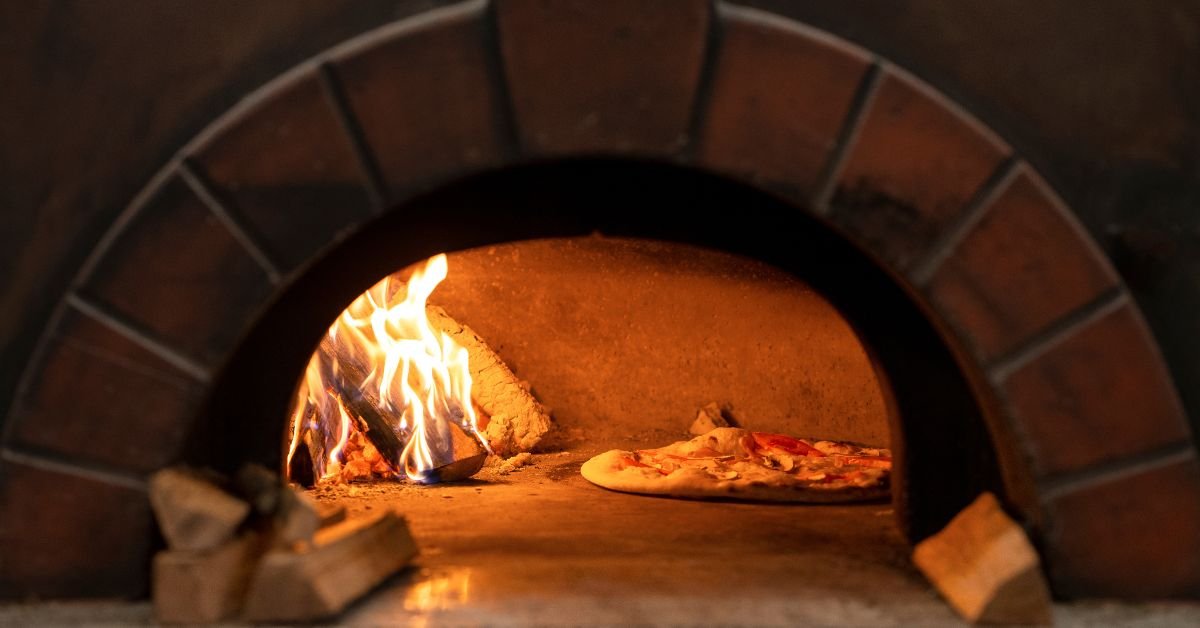WORLD
Forged in Fire: The Legacy of the Tandoori Oven

Forged in Fire he iconic clay oven—often called a tandoor—originated centuries ago in the northern regions of India, particularly Punjab. Built from refractory clay or ceramic-coated steel, this cylindrical structure creates an insulated cooking environment capable of reaching intense heat. Fueled traditionally by charcoal or wood, the tandoor excels at high-heat cooking, perfect for searing meats, roasting naan, and grilling skewers of marinated chicken or paneer. The thermal insulation of the clay walls maintains consistent temperatures, ensuring each dish is infused with a smoky char and signature texture.
Clay vs. Stainless Steel vs. Electric Tandoors Forged in Fire
Clay Tandoor: The Traditional Choice
The classic version relies on natural clay to retain heat and impart rustic flavors. Its porous surface subtly absorbs marinade drippings—adding depth to every subsequent batch of tandoori chicken or kebabs. While it demands care (seasoning, controlled moisture, and proper cleaning), the result is an unmatched Indian barbecue experience.

Stainless Steel & Ceramic-Coated Models
Modern iterations use metal construction, often lined with ceramic for heat retention. These versions are more durable, lightweight, and easier to maintain compared to their clay counterparts. The marshal of stainless steel models has expanded indoor usability while sacrificing a hint of the authentic char of the clay oven.
Gas and Electric Tandoors
For those seeking convenience without compromising much on flavor, gas or electric tandoors offer regulated temperature control and the ability to use them safely inside kitchens. Typically, they lack a charcoal flavor but excel in user-friendliness, enabling quick ignition and easy cleanup.
Reaching the Optimal Temperature: Tandoori Cooking Secrets
Achieving the signature texture in tandoori cooking requires sustained heat—usually between 450°F and 700°F. In clay ovens, charcoal briquettes or wood logs are built atop one another, creating an even, intense heat source. Stainless steel and gas models often come with built-in thermostats, helping home cooks approximate the critical thermal range needed for cooking chicken, naan, or seafood. The heat-demanding environment ensures rapid searing that seals in juices, giving proteins their classic marinade-infused crust.
Signature Dishes: From Tandoori Chicken to Naan Bread
Marinated Meats and Paneer Skewers
Marinating is critical: yogurt-based blends with garlic, ginger, turmeric, garam masala, and red chili help tenderize and flavor. Tandoori chicken is the star—a legacy dish—but others shine too. Paneer tikka transforms cube-shaped cheese into smoky, spiced morsels. Even vegetables and fish relish the vigor of skewers pressed against glowing clay walls.
Bread by the Wall: Naan and Flatbreads
Making naan bread in a tandoori oven is nearly ceremonial. Soft, aerated dough is slapped onto the inner wall, where it puffs in seconds, sporting charred bubbles and a chewy texture. The rapid blast of high heat is essential; kneaded dough absorbs enough moisture to expand without drying out, creating perfect naan rounds.
Home Use: Safety, Maintenance, and Adaptations
Operating a tandoor—especially indoors—requires caution. While clay models are often better suited for outdoor patios, stainless steel or electric units are designed for indoor usage with proper ventilation. Always follow manufacturer guidelines to avoid smoke hazards and keep a safe distance from flammable surfaces.
Routine maintenance involves gently brushing out ash and lightly wiping internal walls. For clay ovens, keeping them hydrated prevents cracking. Ceramic-lined stainless steel models require only an occasional wipe-down. Inside or outside, regular care maintains sanitation and prolongs the life of your appliance.
Contemporary Profiles: Tandoori Ovens in Fusion and Global Cuisine
Today’s culinary innovators use tandoori ovens beyond classic recipes. You’ll find tandoor-roasted cauliflower as a vegan appetizer, charred fish fillets fusing Indian spices with Mediterranean style, and even flatbreads topped with fresh vegetables post-roast. The global fusion trend showcases the versatility of this cooking method, with its ability to create smoky depth in unexpected dishes—think tandoori-style pizza crust or spiced lamb meatballs.
Choosing the Right Tandoori Oven for You
When selecting a tandoor, consider:
- Cooking Frequency & Location: A heavy clay model suits outdoor use, while portable stainless steel units excel on balconies or kitchens.
- Flavor vs. Convenience: Pure charcoal heat brings tradition; gas or electric wins on speed and simplicity.
- Material Durability: Clay is authentic but fragile; steel/carbon-ceramic combos handle wear.
- Versatility: Larger models accommodate bread, meat, and veggies simultaneously—ideal for home feasts.
FAQs
Q: How do I light a clay tandoori oven?
A: Begin with crumpled newspaper or kindling at the base, place small charcoal atop, and allow it to ignite gradually. Once the charcoal is glowing red and the walls are hot, start adding fuel to sustain the high heat.
Q: Can I bake naan in a non-clay (steel/electric) tandoor?
A: Absolutely! Stainless steel or electric tandoors with rounded interiors mimic the heat distribution of clay walls. Just ensure the interior is properly preheated before slapping on the dough.
Q: How do I clean and maintain a tandoori oven?
A: After allowing the oven to cool, brush out ashes using a soft wire brush. Wipe walls lightly with a damp cloth for clay units, and use mild detergent on steel ovens when needed. Avoid soaking clay to prevent cracking.
Q: Can I use a tandoor indoors safely?
A: Only with models specifically designed for indoor use, like gas or electric versions. Clay ovens typically require outdoor ventilation due to smoke and soot.
Q: What temperature does a tandoor reach?
A: Temperatures typically fall between 450°F and 700°F (230–370°C), essential for creating the classic charred crust on meats and perfect puff on naan.
Conclusion
From its clay-laden origins in Punjabi villages to sleek electric units in modern apartments, the tandoori oven remains a cornerstone of Indian cuisine and a chef’s dream. Whether you’re slapping dough onto its heated walls or skewering marinated chicken, this oven fuses tradition and innovation. The combination of intense thermal insulation, charcoal heat, and rich spice blends transforms simple ingredients into unforgettable dishes.
WORLD
Discover the Best Trash Katy Services Near You

Finding the best trash Katy services can feel overwhelming. With so many options for residential, commercial, and bulk trash removal, it’s easy to get lost in the mix. From scheduling pickup to understanding pricing and eco-friendly practices, knowing where to start is key. This guide will walk you through everything you need to know, so your trash problems are a thing of the past.
Katy Trash Pickup Services: Reliable Solutions for Every Home
Whether you’re a homeowner, renter, or property manager, Katy trash pickup services make life easier. Many local providers offer flexible schedules, same-day pickup, and specialized services like recycling and bulk garbage collection.
“I switched to a local trash pickup service in Katy last year, and the convenience of automated scheduling saved me hours every month,” shared a Katy resident on a local community forum.
Key features to look for in trash pickup services include:
- On-demand pickup options
- Subscription plans for weekly or bi-weekly service
- Support for hazardous or bulky items
- Transparent pricing with no hidden fees
Residential Trash Removal Katy: Keeping Homes Clean and Safe
Residential trash removal Katy services go beyond curbside pickup. From single-family homes to multi-unit apartments, these services ensure that waste is properly collected, sorted, and recycled whenever possible.
Benefits:
- Reduces clutter and keeps neighborhoods tidy
- Minimizes exposure to pests and odors
- Ensures proper disposal of electronics, yard waste, and recyclables
Many Katy residents have started prioritizing companies that offer eco-conscious disposal methods. A sustainable approach not only helps the environment but can reduce landfill costs for the community.
Junk Removal Services Katy TX: Handling Large and Unwanted Items
When it comes to junk removal services Katy TX, homeowners and businesses need specialized solutions for bulky items such as old furniture, appliances, or construction debris. These services often provide:
- On-site assessments
- Same-day or next-day pickup
- Sorting of items for donation, recycling, or disposal
Example: A local contractor recently praised a Katy junk removal service for efficiently clearing out a full warehouse of old equipment in under 4 hours—a task that would have taken their team days.
Affordable Trash Hauling Katy: Cost-Effective Waste Solutions
Not all trash services are created equal. Affordable trash hauling Katy options help residents and businesses get the job done without breaking the bank. Features to consider:
- Transparent flat rates or per-load pricing
- Discounts for recurring service
- Bulk hauling options for construction or landscaping projects
Pro tip: Always compare multiple providers to ensure you’re getting the best value for your budget.
Bulk Garbage Pickup Katy: Efficient Large-Scale Waste Removal
Bulk garbage pickup Katy is perfect for seasonal cleanouts, moving, or large renovations. Many companies allow you to schedule bulk pickups separately from your regular trash service, ensuring convenience and efficiency.
Katy Waste Management Companies: Professionals You Can Trust
From small local operators to larger corporate waste management firms, Katy waste management companies provide comprehensive solutions. Their services often include:
- Commercial and residential pickup
- Recycling and eco-friendly disposal
- Hazardous and electronic waste management
Choosing a reputable company ensures your waste is handled responsibly and reduces the risk of fines or environmental penalties.
Eco-Friendly Trash Disposal Katy: Sustainable Waste Practices
With increasing concern about environmental impact, eco-friendly trash disposal Katy services are growing in popularity. These services focus on:
- Recycling paper, plastics, metals, and electronics
- Composting yard waste
- Reducing landfill contributions
Sustainability-conscious residents often prefer providers who publish annual reports on recycling efforts, providing transparency and accountability.
Commercial Trash Services Katy: Streamlined Business Waste Management
Businesses require specialized solutions. Commercial trash services Katy help offices, retail stores, and restaurants manage waste efficiently, often with:
- Scheduled pickups during off-hours
- Dumpster rentals for high-volume waste
- On-site waste audits to optimize disposal
Efficient commercial waste management reduces clutter, keeps employees safe, and ensures compliance with local regulations.
Local Trash Collection Katy: Community-Focused Solutions
Supporting local trash collection Katy providers ensures faster response times, personalized service, and stronger community ties. Residents benefit from:
- Direct communication with service teams
- Flexible scheduling options
- Community-based recycling programs
Recycling and Trash Services Katy: Combining Convenience with Sustainability
Many residents prefer providers offering combined recycling and trash services Katy. Benefits include:
- Simplified pickup schedules
- Reduced environmental impact
- Cost efficiency through bundled services
How to Choose the Best Trash Katy
Choosing the right trash service can be simple if you focus on these factors:
- Reliability: Check reviews and ratings to ensure consistent service.
- Pricing Transparency: Avoid hidden fees and unclear contracts.
- Eco-Friendly Options: Look for recycling and composting programs.
- Flexibility: Confirm that the service can handle special requests like bulk pickup or electronics.
- Customer Support: A responsive support team is crucial for smooth operations.
FAQ Section
Q1: What is the best trash pickup service in Katy TX?
A: The best service depends on your needs—residential, commercial, or bulk. Look for reliability, transparent pricing, and eco-friendly options.
Q2: How much does junk removal in Katy cost?
A: Prices vary by provider, item size, and disposal complexity. On average, expect $100–$400 for a standard junk load.
Q3: Are there eco-friendly trash disposal options in Katy?
A: Yes. Many local services offer recycling, composting, and electronic waste disposal to minimize environmental impact.
Q4: Can I schedule bulk garbage pickup in Katy?
A: Absolutely. Most providers allow scheduled bulk pickups separate from regular trash collection.
Conclusion
Finding the best trash Katy service doesn’t have to be complicated. From residential trash removal Katy to bulk garbage pickup Katy, and eco-friendly disposal options, the city offers numerous reliable providers. Whether you prioritize affordability, sustainability, or convenience, this guide equips you to make an informed decision.
WORLD
Taylor Swift: A Journey of Reinvention, Ownership, and Cultural Influence

Few artists have reshaped modern music and pop culture the way Taylor Swift has. From her teenage country beginnings in Nashville to her current position as one of the most influential entertainers on the planet, her career has been a masterclass in artistry, business acumen, and storytelling. Her rise to fame is not only about chart-topping hits but also about resilience, reinvention, and taking control of her creative and financial future.

Early Beginnings: The Nashville Dream
Born in Pennsylvania, Swift moved to Nashville at a young age, determined to break into the country music industry. Signing with Big Machine Records, she released her self-titled debut album that blended heartfelt songwriting with traditional country melodies. Tracks like “Tim McGraw” and “Teardrops on My Guitar” instantly made her a household name, proving that she was more than a passing teen sensation.
Her follow-up album Fearless solidified her reputation. Songs like “Love Story” and “You Belong With Me” bridged country and pop, earning her critical acclaim, multiple awards, and her first Grammy for Album of the Year. These early records showcased her gift for autobiographical storytelling, a skill that would continue to define her career.
Crossing Over: Pop Stardom and Global Recognition
By the time Red and 1989 were released, Swift had fully transitioned into mainstream pop. The 1989 era, filled with hits like “Shake It Off” and “Blank Space,” propelled her to global superstardom. Collaborating with producers like Max Martin and Shellback, she mastered the formula for pop anthems while retaining her lyrical depth.
1989 earned her another Album of the Year Grammy, cementing her as a genre-defying artist who could dominate both country and pop markets. During this period, she also leaned into elaborate music videos, bold fashion reinventions, and highly publicized collaborations that expanded her influence beyond music.
Reputation, Reinvention, and Image Control
When Reputation arrived, Swift took a darker turn. The album explored themes of media scrutiny, betrayal, and reinvention. Songs like “Look What You Made Me Do” introduced an edgier persona, signaling her ability to adapt and respond to cultural narratives surrounding her. Despite initial criticism, Reputation sold millions worldwide and demonstrated her resilience in an industry that often thrives on tearing artists down.

Folklore, Evermore, and the Return of Storytelling
The 2020 pandemic brought another reinvention. Working closely with Jack Antonoff and Aaron Dessner, she released Folklore and Evermore, two sister albums that showcased indie-folk and alternative sounds. These records shifted focus from autobiographical tales to fictional storytelling, exploring characters, narratives, and emotional landscapes.
Songs like “Cardigan” and “August” received critical praise for their lyrical complexity. Folklore went on to win the Grammy for Album of the Year, proving that even in unexpected genres, she could dominate both charts and awards.
Masters, Ownership, and Taylor’s Version
One of the defining chapters in her career has been her battle for ownership of her music. After Scooter Braun’s acquisition of Big Machine Records, Swift’s masters for her first six albums changed hands without her consent. In response, she began re-recording her catalog as Taylor’s Version.
This unprecedented move not only gave her financial control but also inspired a larger conversation about artists’ rights in the music industry. Albums like Fearless (Taylor’s Version) and Red (Taylor’s Version) have been embraced by fans, often outperforming the originals. By reclaiming her work, she redefined what it means to be an empowered artist in the modern era.
The Eras Tour and Cultural Impact
Swift’s Eras Tour became a global phenomenon. More than just a concert, it served as a retrospective journey through every stage of her career, from her country roots to her latest albums like Midnights and The Tortured Poets Department. The tour shattered records for ticket sales, streaming boosts, and cultural engagement.
Swifties, her dedicated fanbase, became an integral part of this experience. From trading friendship bracelets to creating viral social media moments, the fan culture surrounding Swift elevated her tour into a global cultural event.
Recent Releases: Midnights and The Life of a Showgirl
Her 2022 album Midnights blended synth-pop with introspective storytelling, delivering hits like “Anti-Hero” that resonated with both critics and audiences. The album quickly became one of her most commercially successful projects.
Looking ahead, The Life of a Showgirl has generated immense anticipation. With its glamorous aesthetic and theatrical undertones, the record signals yet another artistic reinvention. Fans expect it to blend bold visuals with intricate songwriting, showcasing Swift’s never-ending ability to surprise.

Awards, Records, and Influence
Over her career, Swift has broken countless records. She is one of the best-selling artists of all time, has earned multiple Grammy Awards, and continues to dominate streaming platforms. Her ability to consistently deliver chart-topping albums across genres is unmatched.
Beyond the numbers, her influence extends to cultural conversations about gender, ownership, and the role of music in shaping identity. By combining artistry with activism, she has become more than an entertainer—she is a cultural force.
FAQs
How many albums has Taylor Swift released?
She has released 11 studio albums, including re-recordings of earlier works labeled Taylor’s Version, with more on the way.
Why did she re-record her albums?
Swift re-recorded to reclaim ownership of her masters after they were sold to Scooter Braun’s company without her approval.
What is The Eras Tour?
The Eras Tour is a global concert series that takes fans through every stage of her career, celebrating her diverse discography.
What is her latest album?
Her most recent album is The Life of a Showgirl, which blends theatrical themes with her signature lyrical storytelling.
How many Grammys has she won?
Swift has won more than a dozen Grammy Awards, including multiple Album of the Year honors.
What is the Swifties fan culture?
Swifties are her devoted fans, known for their creativity, loyalty, and global community that drives much of her cultural impact.
Conclusion
Taylor Swift’s journey is more than a story of hit records—it is one of resilience, reinvention, and empowerment. From her Nashville beginnings to her bold moves in reclaiming her catalog, she has consistently shaped not just music but the business and culture around it. Her artistry continues to evolve, her fanbase only grows stronger, and her legacy as one of the most influential artists of her generation is firmly secured
WORLD
Is Crypto a Scam? Exploring Truth, Risks, and Reality

Cryptocurrency has become one of the most debated topics in modern finance. With headlines about sudden millionaires, blockchain innovation, and government regulations, many people still ask a pressing question: is crypto a scam or a legitimate investment opportunity? While there are undeniable cases of fraud and manipulation in the crypto space, it’s important to understand the difference between the technology itself and the scams that operate around it.
Understanding the Foundation of Cryptocurrency
At its core, cryptocurrency is built on blockchain technology—a decentralized, transparent ledger that records transactions across a distributed network of computers. Unlike traditional currencies controlled by central banks, digital assets such as Bitcoin and Ethereum rely on cryptographic verification. This transparency allows anyone to track activity on public blockchains, making it difficult to forge records.

The legitimacy of cryptocurrency as a technology is undeniable. Bitcoin, for example, has been recognized globally as a digital asset and even adopted by some countries and major corporations. Ethereum powers decentralized finance (DeFi) platforms, smart contracts, and non-fungible tokens (NFTs). These innovations show that crypto is far more than a passing trend or fraudulent scheme.
Why Do People Think Crypto Is a Scam?
Despite its strong technological foundation, crypto has developed a reputation for fraud. This skepticism often comes from real cases of scams that exploit uninformed investors. Several factors contribute to the perception:
- High Volatility: Prices can swing dramatically, leading to major gains but also devastating losses.
- Lack of Regulation: Unlike banks or stock markets, crypto trading operates with limited oversight, creating opportunities for bad actors.
- Scam Projects: Fake tokens, rug pulls, and pump-and-dump schemes mislead investors with promises of unrealistic returns.
- Celebrity Endorsements: Influencers and public figures have promoted fraudulent tokens, fueling distrust.
These issues don’t mean cryptocurrency itself is fraudulent, but they highlight the risks of unregulated and speculative markets.
Common Crypto Scams Investors Should Know
To determine if crypto is a scam, one must separate genuine innovation from fraudulent activities. Some of the most common scams include:
1. Rug Pulls and Fake Tokens
Developers create a token, hype it with marketing and social media, then suddenly withdraw all liquidity, leaving investors with worthless assets.
2. Pump and Dump Schemes
Groups artificially inflate a coin’s price through coordinated buying and hype. Once new investors join, organizers sell off their holdings, causing prices to crash.
3. Phishing and Fake Exchanges
Hackers create fake wallets, exchanges, or websites to steal private keys and funds. Victims often believe they are on a legitimate platform.
4. Fraudulent ICOs (Initial Coin Offerings)
New projects raise funds by selling tokens but disappear before delivering a real product. The infamous OneCoin scam is an example of this.
5. Celebrity & Influencer Endorsement Scams
Projects pay celebrities to promote tokens without disclosing risks, tricking people into believing the investment is safe.
How to Tell if a Crypto Project Is Legitimate
Not all crypto projects are scams, but distinguishing between the two requires careful research:
- Check the White Paper: A legitimate project will provide a clear vision, real technology, and a roadmap.
- Research the Team: Anonymous developers can be a red flag, while transparent, credible founders add trust.
- Look for Smart Contract Audits: Reputable projects undergo third-party audits to ensure code security.
- Evaluate Tokenomics: Understand supply, distribution, and utility. If it only promises huge profits, beware.
- Verify Community Presence: Healthy discussion on forums like Reddit, Twitter, or Discord can signal authenticity.
Regulation and Legal Protections
Global regulators are increasingly stepping in to reduce scams and protect investors. The SEC in the United States, FCA in the UK, and other bodies around the world are creating frameworks for digital assets. Compliance measures such as KYC (Know Your Customer) and AML (Anti-Money Laundering) are now required by most major exchanges like Coinbase, Binance, and Kraken.
While regulation adds legitimacy, it cannot completely eliminate scams. Investors must remain cautious and proactive in safeguarding their funds.

Security Best Practices for Crypto Investors
Even in a world with increasing regulation, individual security is critical. Here are ways to protect yourself from scams:
- Use Hardware Wallets: Devices like Ledger and Trezor store private keys offline.
- Enable Two-Factor Authentication: Protects exchange accounts from unauthorized access.
- Avoid Unrealistic Promises: Any project guaranteeing returns is likely fraudulent.
- Double-Check URLs and Apps: Fake apps and websites are common tools for hackers.
- Stay Updated: Following blockchain news, community forums, and official exchange announcements helps identify risks early.
The Future of Cryptocurrency: Scam or Evolution?
While scams are an unfortunate reality, they exist in nearly every financial market—from penny stocks to real estate. What makes crypto unique is its blend of innovation and risk. Projects like Ethereum, Polkadot, and Solana are driving decentralized applications, financial inclusion, and cross-border payments.
The rise of stablecoins and central bank digital currencies (CBDCs) also shows how mainstream digital currency is becoming. Rather than dismissing crypto as a scam, it’s more accurate to say the market contains both fraudulent actors and groundbreaking technology.
FAQs
Is cryptocurrency a scam or real investment?
Cryptocurrency itself is not a scam. It is a legitimate technology powered by blockchain. However, scams within the industry exploit uninformed investors.
How can I tell if a crypto project is safe?
Check for transparency, team credibility, smart contract audits, and realistic goals. Avoid projects with anonymous developers or guaranteed profits.
What are the most common crypto scams?
Rug pulls, fake ICOs, phishing, pump-and-dump schemes, and fraudulent exchanges are the most common.
Can you lose all your money in crypto?
Yes, due to volatility or scams. Only invest what you can afford to lose and always research before investing.
What role does regulation play in preventing scams?
Regulation by organizations like the SEC and FCA provides investor protections, but it cannot fully eliminate risks in a decentralized system.
Are celebrity-endorsed crypto projects trustworthy?
Not necessarily. Many influencers have promoted fraudulent tokens. Always verify the legitimacy of the project before investing.
Conclusion
So, is crypto a scam? The short answer is no—cryptocurrency as a technology is legitimate and innovative. The blockchain offers transparency, decentralization, and powerful use cases. However, the industry has attracted scams, fake tokens, and fraudulent schemes due to its unregulated nature.
The best approach is to separate the innovation from the manipulation. By understanding red flags, researching projects, and practicing strong security measures, investors can participate in this evolving digital economy while minimizing risks. Crypto is not a scam—it is a financial revolution that requires knowledge, caution, and responsibility.

 SCIENCE3 months ago
SCIENCE3 months agoThe Baby Alien Fan Bus Chronicles

 BUSINESS3 months ago
BUSINESS3 months agoMastering the Art of Navigating Business Challenges and Risks

 WORLD3 months ago
WORLD3 months agoRainwalkers: The Secret Life of Worms in the Wet

 WORLD3 months ago
WORLD3 months agoRainborne Royals: The Rise of Winged Termites

 WORLD3 months ago
WORLD3 months agoFox News Returns to Dish: Broadcast Battle Resolved

 EDUCATION3 months ago
EDUCATION3 months agoFresh Bites: Foodstuffs Update

 FOOD3 months ago
FOOD3 months agoDining with the Sandhill Crane: Nature’s Graceful Forager

 WORLD3 months ago
WORLD3 months agoTurning Point: Inside Today’s Youth Detention Developments
















